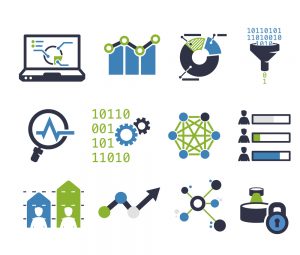
Data scientists spend nearly 40% of their time doing data prep and just 11% of their time finding the insights businesses hope for.
To take full advantage of digital transformation, companies need access to data —not just data in its raw form, however. Companies must get data from its source into a form ready to use.
The market for data prep is estimated to increase sharply by 2025, just over 25% from 2017, according to some market research sources. This renewed interest in data prep comes from companies realizing that just having data isn’t going to be enough to stay relevant.
See also: Building the Business Case for Data Prep Part II: Calculating the ROI
Data prep is a competitive landscape with companies such as IBM, Microsoft, and Tableau competing for part of that billion-dollar market share.
Companies need debugged data to provide real-time insights into their market. Continuous intelligence is challenging, but necessary, driving many companies to outsource their data prep in order to put their data science talent on the story that data can tell.
The Need for Fast Data
The labor for prepping and cleaning data is enormous and for many companies, not worth the effort it takes. With data science being such a competitive field – and many companies losing top talent already to FAANG players – companies are moving towards using data science departments only for sophisticated, higher-order tasks.
The rising complexity of data is part of the issue. Now that companies can access both structured and unstructured data, the sheer amount of data customers produce is astounding. Industries grapple with digital disruption, so fast access to all that data is now a necessary part of the operation.
The Process of Data Prep
There are five basic types of prep companies need:
- curation: the right kind of data to answer questions or provide insight
- cataloging: a process that makes data discoverable later
- quality: cleaning data for use
- ingestion: procuring data and then importing for immediate insight or storage
- governance: principles that ensure continual data quality
Each is a vital piece of the data prep process. North America is expected to hold the largest share of this up and coming market with IT and Telecoms occupying the largest share of most fields.
It’s not just business. The government is also using this advance in data preparation to make better use of data for public policy and planning. They’re using this data to enhance public services and provide a better picture of local conditions in real-time.
The Future of Data Prep
Data prep is one of the many data-as-a-service models popping up in response to the digital transformation. As many businesses look forward to the insights offered by their data, the need for data prep becomes clear.
Rough estimates put data scientists spending nearly 40% of their time doing data prep already while just 11% of their time is spent finding those insights businesses hope for. Smart businesses will begin to outsource data prep to free up more time for in-house teams to do what they do best — provide answers to questions and build predictive solutions to increase efficiency.
With the boom in AI solutions, the data prep market was bound to experience an increase. With these two segments of the data solutions market-linked, we could see even more significant increases in data prep as smaller startups begin to build their own solutions.
The adoption of data prep solutions could soon give us a bigger indicator of which businesses will remain competitive and which will get bogged down in the massive project of keeping data ready and available for use.



























